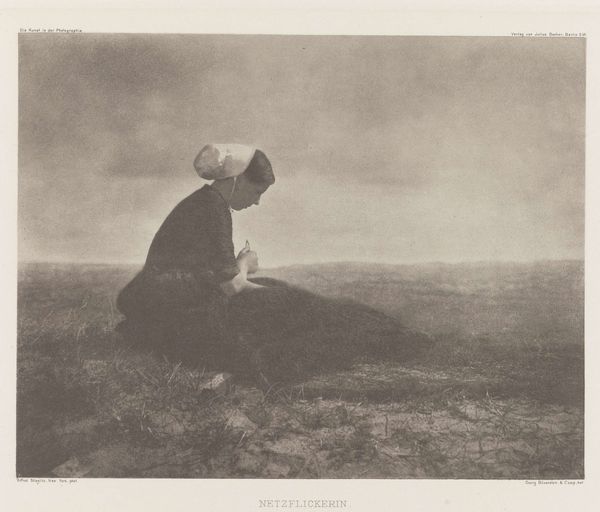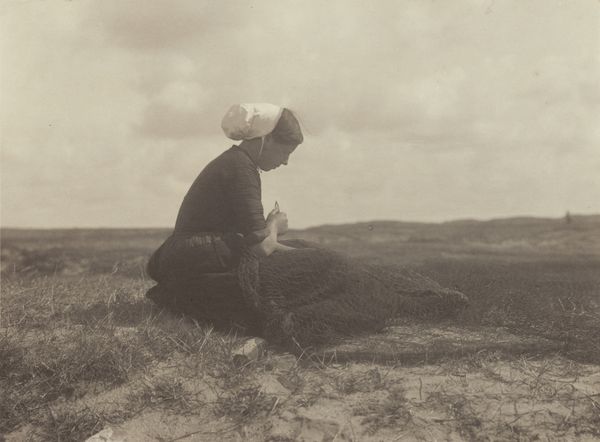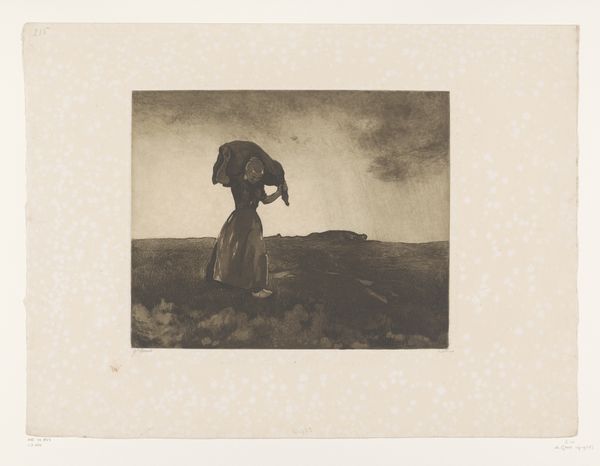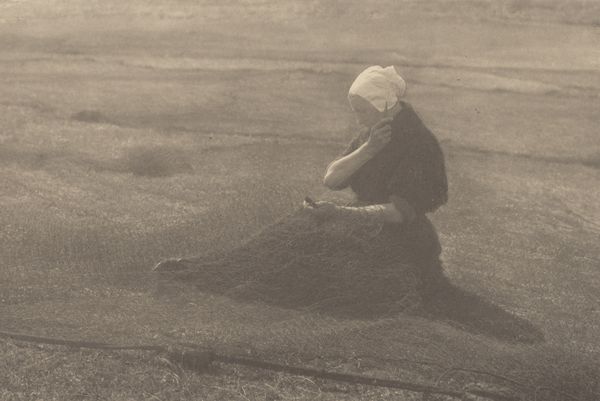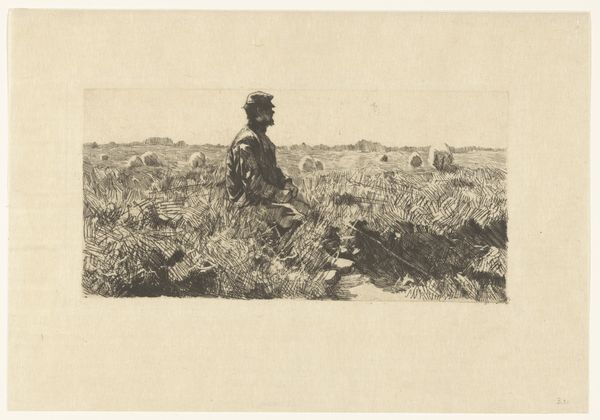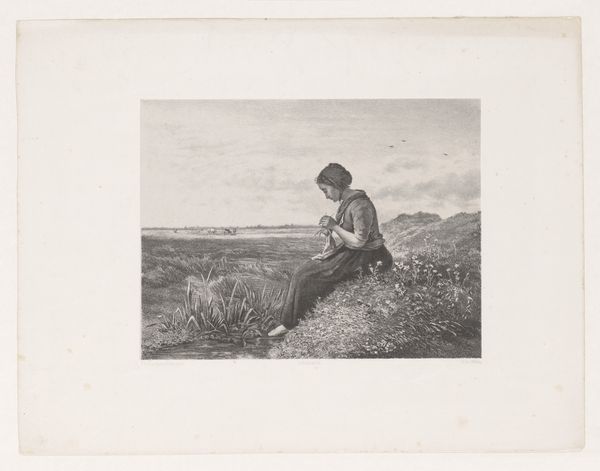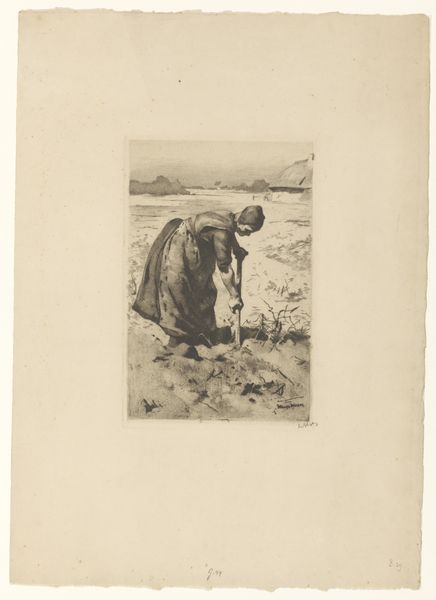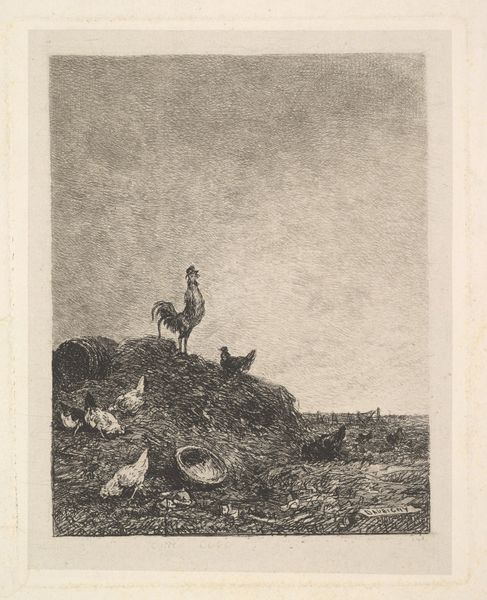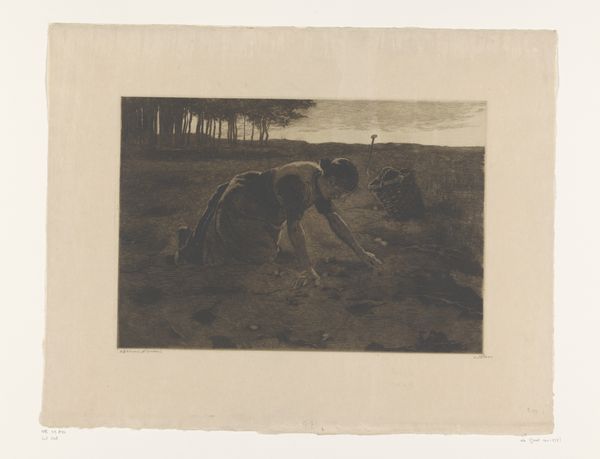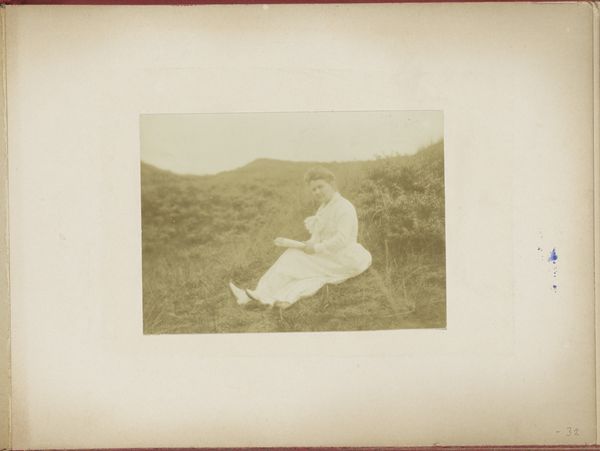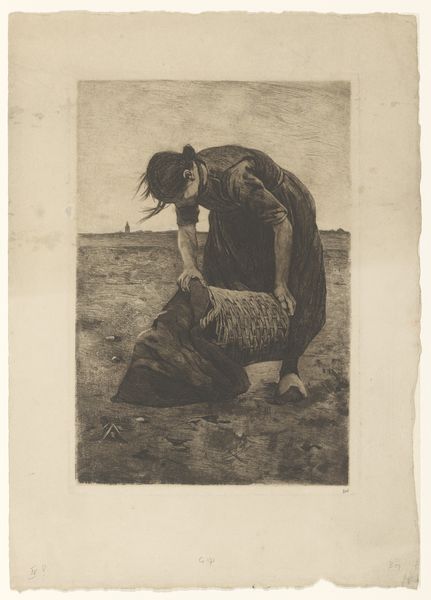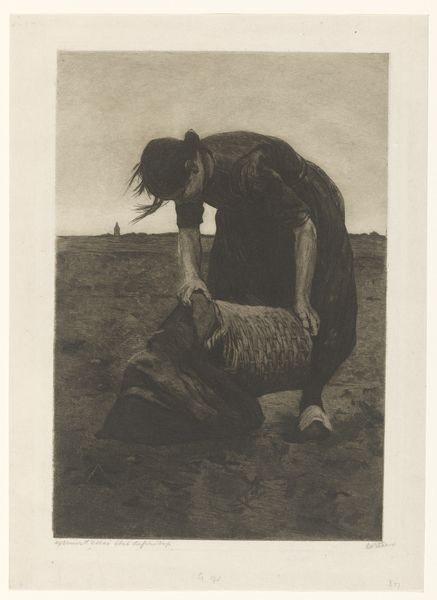
Dimensions: 41.8 × 54.3 cm (image); 42.0 × 54.5 cm (paper/mount)
Copyright: Public Domain
Editor: This photograph, "The Net Mender" by Alfred Stieglitz, taken in 1894, uses a beautiful sepia tone and is quite painterly. The figure seems isolated within this expansive landscape. What does this image bring to mind for you? Curator: For me, this image is about labor and the representation of working women at the turn of the century. Stieglitz, while known for pushing photography as fine art, also inadvertently captured the realities of the working class through his chosen subjects and printing methods. Editor: So, you see her activity, mending the fishing net, as key to understanding the photo? Curator: Precisely. The act of mending speaks to repetitive labor and the material conditions of her life. The photograph's tonalist style, achieved through specific printing processes, romanticizes, yet also reveals the woman's dependence on this task for survival. We should consider what this says about consumption and the systems needed to feed the society. Editor: It’s interesting to think about the contrast between the intended artistry and the unintended documentation of working conditions. Curator: Exactly. The dreamy aesthetic doesn’t erase the reality of the net mender's existence; instead, it provides a lens through which to examine the social and economic context of the time. Even the materials used in creating the print are integral, as they reflect the aesthetic choices and technological possibilities of the era. How the photo was crafted reflects not only aesthetic ambition but economic considerations. Editor: I'm now thinking about the role of photography itself as both a medium of art and a record of labor. Curator: And how those purposes intersect and sometimes conflict. It asks us to reconsider hierarchies separating 'fine art' from 'craft', the maker from the subject, ultimately pushing the boundaries of representation. Editor: I see. It adds such an important critical dimension that complicates the viewing experience, but in a good way! Curator: Indeed, a materialist perspective always shifts our gaze beyond the surface and into the conditions of artistic production.
Comments
No comments
Be the first to comment and join the conversation on the ultimate creative platform.
